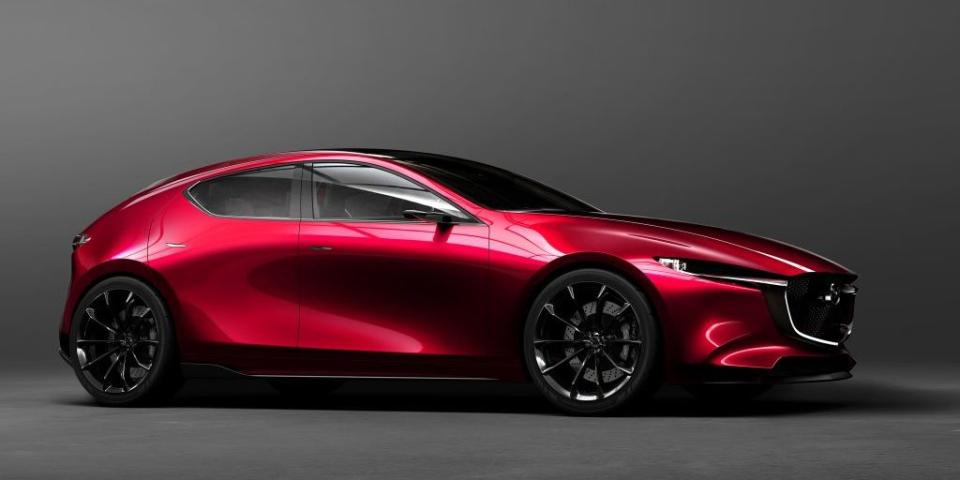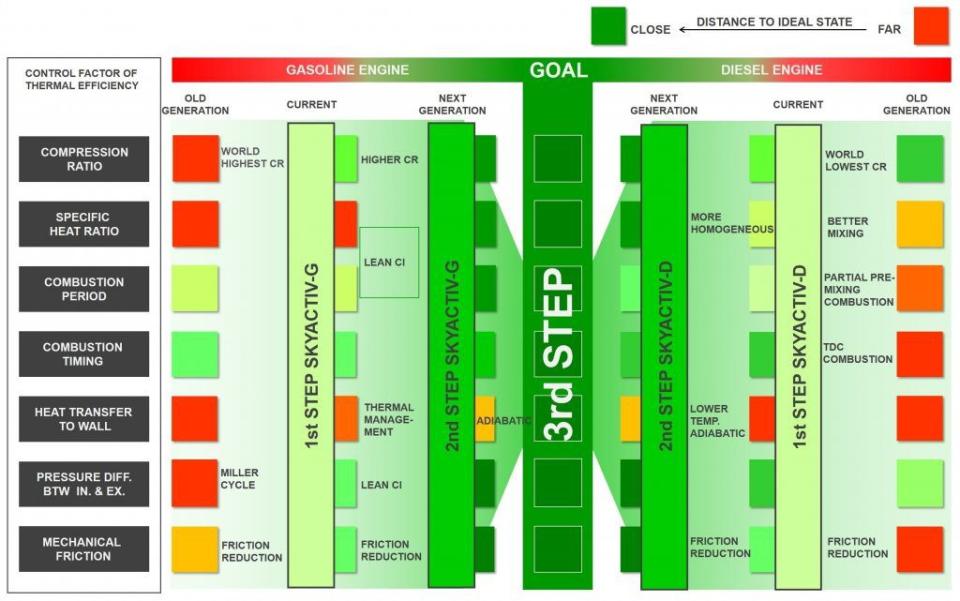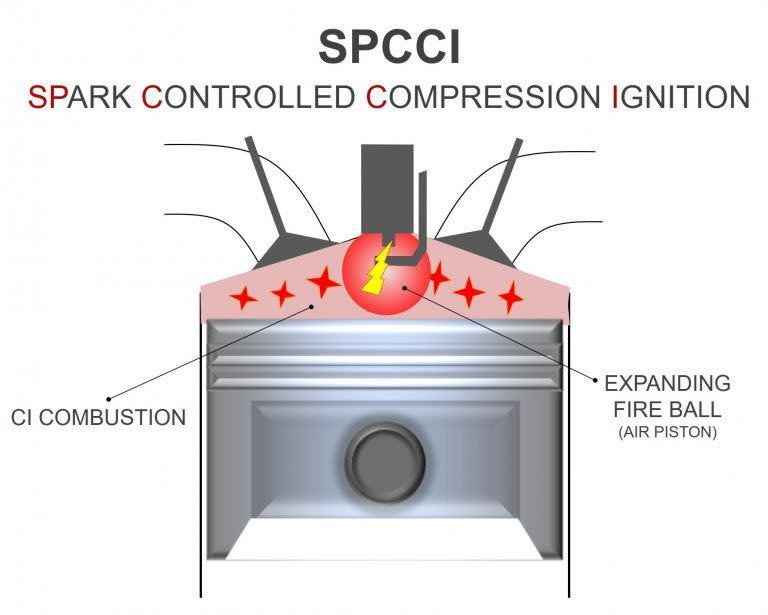Mazda Is Fighting For Internal Combustion's Future

If you look around the auto industry today, you might think the internal combustion engine isn't long for this world. Automakers are increasingly pursuing fully electric drivetrains; amidst an unfolding emissions cheating crisis, numerous cities are considering outright bans on certain internal-combustion vehicles.
At Mazda, the view of internal combustion isn't quite so dire. "Looking 10 years, 20 years into the future, we think the internal-combustion engine will still be mainstream," Masashi Otsuka, Vice President of Research & Design at Mazda North American Operations, told Road & Track at the 2018 New York International Auto Show.
Shown above, the Mazda KAI concept that made its North American debut at the 2018 New York International Auto Show
That philosophy is most obvious in Mazda's latest engine: Skyactiv-X, which uses gasoline compression ignition to get major power and impressive fuel economy at the same time. Mazda believes there's still life in the piston engine.
"In Canada or Scandinavia or France, they generate electric power with clean energy," said powertrain engineer Yoshiaki Yamane. "Other countries generate electricity from coal or oil. In those countries, the CO2 gap between a battery EV and an internal combustion engine is not so big. Therefore, we want to improve the internal combustion engine first."
Mazda engineers sat down and listed the ideal characteristics of both diesel and gasoline engines. Then, they set out to engineer a gas-burning engine that embodied all those desirable traits. The result is Skyactiv-X, a supercharged, high-compression gasoline engine that can utilize diesel-style compression ignition, triggered by a spark plug.

A word on how that works. In a traditional gasoline-burning engine, the flame triggered by the spark plug moves out from the center of the compressed air-fuel mixture to the perimeter of the combustion chamber. Relatively speaking, it's a slow process-by the time the flame front consumes the last bits of atomized fuel on the periphery of the combustion chamber, the piston has already traveled a good way downward on its power stroke, meaning the fuel burned at the end of the combustion event contributes less to the overall power production.
Compression ignition is nearly instantaneous-all the fuel in the combustion chamber flashes and burns simultaneously. Uncontrolled, it's a violent process-hence why pinging and knocking in a traditional engine can damage valves and pistons, particularly if it happens at the wrong moment. But Mazda engineers figured out a way to precisely time this compression ignition event using the engine's conventional spark plug. In compression-ignition mode, the engine runs a super-lean air-fuel mixture-up to 30:1, compared to a conventional engine's 14:1. High-compression pistons squeeze the intake mix nearly to the detonation point; when the spark plug fires, the ensuing pressure increase caused by the burning of the fuel nearest the spark plug triggers compression-ignition throughout the combustion chamber. It's like detonation, but precisely timed and controlled, harnessing the instantaneous and complete combustion of detonation to drive the piston down on its power stroke.

The result, says Otsuka, is a 2.0-liter prototype Skyactiv-X engine that sips fuel like a 1.5-liter but makes power comparable to a 2.5-liter. With fine-grained computer control allowing the engine to run in compression-ignition mode under most driving conditions, the lean-burn engine returns notable efficiency without a decrease in power or performance. Unlike a conventional engine, the Skyactiv-X is efficient across nearly its full RPM range, allowing engineers to pair shorter gear ratios for more responsive acceleration.
Plus, says Yamane, from the driver's seat you can't even tell when the engine switches between conventional and compression-ignition modes. It's linear and responsive with no quirky behavior. And, he says, "the engine sounds really good."
Mazda hasn't said exactly when Skyactiv-X will appear in a production model, nor which vehicle will get the engine first. But Otsuka said the technology will eventually expand to the full Mazda lineup-including the MX-5 Miata.
"Basically, we are still interested in developing the internal combustion engine," Otsuka said. "Current battery EV technology is found in smaller vehicles. Do you think American consumers want to drive small vehicles? We don't think so."
"We have to continue to develop the high-efficiency internal combustion engine," he continued. "It's our first priority. The key to our future."
You Might Also Like

 Yahoo Autos
Yahoo Autos 